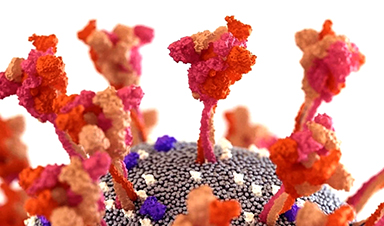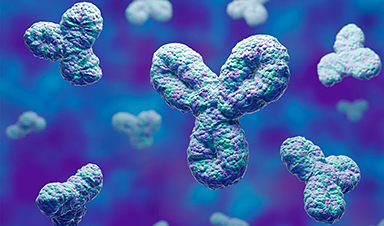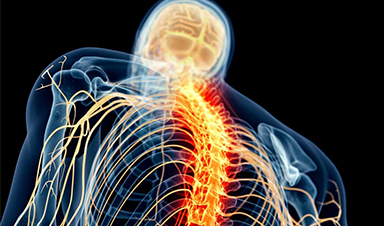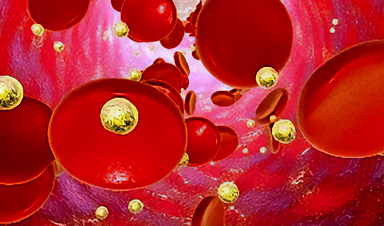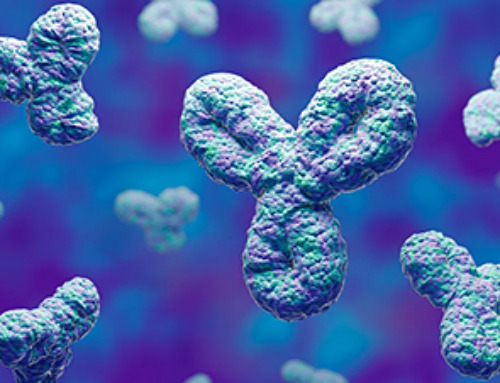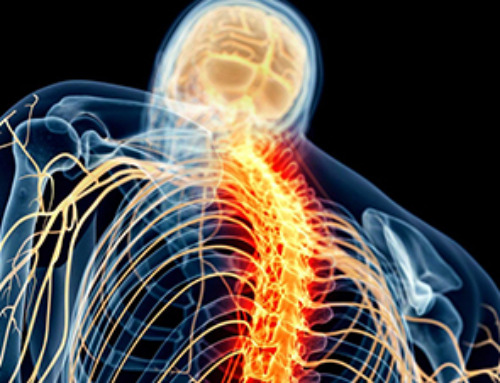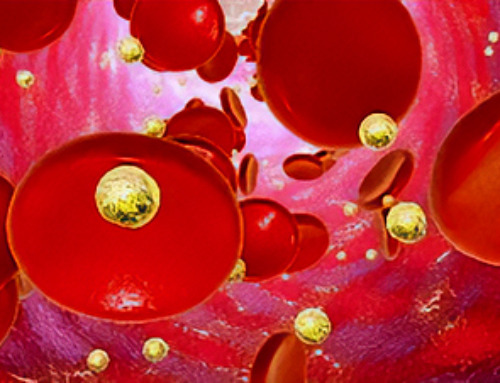Scientists have recently developed electrochemical immunosensors based on graphene oxide−gold (GO−Au) nanocomposites. These immunosensors are highly sensitive with dual function, i.e., they can detect severe acute respiratory syndrome coronavirus 2 (SARS-CoV-2) antigen and antibody. This study is available in the journal ACS Applied Bio Materials.
Impact of Global Outbreak of Diseases
In the last century, the world has witnessed several global outbreaks that include influenza, severe acute respiratory syndrome coronavirus (SARS-CoV), middle east respiratory syndrome coronavirus (MERS), and most recently, SARS-CoV-2. The ongoing coronavirus disease 2019 (COVID-19) pandemic, caused by SARS-CoV-2, has drastically impacted the global healthcare system and economy. To date, this virus has claimed more than 6.2 million lives and infected around 517 million individuals worldwide.
Scientists worldwide have worked extensively to develop effective preventive measures and sensitive diagnostic tools for fast and accurate detection of the SARS-CoV-2 virus. Early detection of the disease would help prevent further transmission of the virus in the community.
Diagnostic Tools for SARS-CoV-2
Although reverse transcriptase-polymerase chain reaction (RT-PCR) can accurately detect the SARS-CoV-2 virus by identifying viral genomic RNA, it requires expensive setups and highly skilled personnel for its operation. Scientists have stated serological-based methods, e.g., enzyme-linked immunosorbent assay (ELISA), for the detection of SARS-CoV-2 antibodies, are mind-numbing and time-consuming, which restricts their usage for mass testing for COVID-19 antibodies.
Previous studies have reported the development of biosensors, based on field-effect transistor (FET), electrochemical, and fluorescence, to detect COVID-19 disease. Electrochemical biosensors could be extremely advantageous over other biosensors because of their high sensitivity, accuracy, easy operation, and rapid detection processes. Scientists have stated that there is a need to develop superior electrochemical biosensors with greater transducing capabilities, applicability, and high active surface area.
Previous studies have shown that several nanomaterials and nanocomposites, for example, gold nanoparticles (AuNPs), graphene oxide (GO), and reduced graphene oxide (RGO), are promising constituents for novel electrochemical biosensors.
Development of Highly Sensitive Electrochemical Immunosensor for SARS-CoV-2: A New Study
Scientists have synthesized GO−Au nanocomposites to fabricate two immunosensors used to detect SARS-CoV-2 antigen and antibody. The newly developed GO−Au nanocomposites possess high conductivity, a large surface to area ratio, and several functional groups for their binding with biomolecules.
The authors have characterized the newly synthesized nanocomposites using UV−Vis spectroscopy, transmission electron microscopy (TEM), and X-ray diffraction (XRD). The average particle size of the AuNPs in the nanocomposite was measured to be 12.1 nm. UV-Vis analysis revealed the presence of characteristic peaks of GO (265 nm) and Au (538 nm) in the synthesized GO-Au nanocomposite. Interestingly, XRD analysis showed a peak at 26.4°, which implied a partial reduction of GO in the nanocomposite. TEM image indicated a uniform dispersion of AuNPs in the nanocomposite as well as its polycrystalline nature.
The electrochemical activity of GO-Au nanocomposite and fabricated immunosensors were analyzed through differential pulse voltammetry (DPV), cyclic voltammetry (CV), and electrochemical impedance spectroscopy (EIS) techniques. Scientists performed all electrochemical measurements in redox electrolytes.
CV helped determine SARS-CoV-2 antibody−antigen interaction on electrode surfaces. Both CV and DPV results revealed effective fabrication of the SARS-CoV-2 antibody immunosensor.
In this study, researchers reported that the SARS-CoV-2 antigen immunosensor exhibited excellent sensitivity with a linear detection range between 10.0 ag mL–1 and 50.0 ng mL–1. They further estimated the detection range of antibody immunosensor to be between 1.0 fg mL–1 and 1.0 ng mL–1. For the SARS-CoV-2 antibody immunosensor, the limit of detection (LOD) was measured to be 1 fg mL−1. Similarly, the LOD of the SARS-CoV-2 antigen immunosensor was estimated to be 3.99 ag mL−1.
Synthetic samples were used initially to analyze both the immunosensors and the results were later validated using serum and nasopharyngeal swab samples of COVID-19 patients. They obtained samples from nine different COVID-19 patients to validate their findings. Both DPV analysis and voltammetric characterization showed that the SARS-CoV-2 antibody immunosensor and SARS-CoV-2 antigen immunosensor could be effectively utilized to study clinical samples.
To further determine the sensitivity of the immunosensors, scientists used nasopharyngeal samples of seven different patients (four SARS-CoV-2 negatives and three positives). The results obtained in this study were consistent with the RT-PCR test.
Conclusion
In this study, the authors developed electrochemical immunosensor platforms based on newly developed GO−Au nanocomposites. These immunosensors have a dual function, i.e., detection of both SARS-CoV-2 antibodies as well as antigen. In the future, these immunosensors could be used to develop portable point of contact (POC) devices for accurate detection of the SARS-CoV-2 virus.
News
Specially engineered antibody delivers RNA therapy to treatment-resistant tumors
Elias Quijano, PhD; Diana Martinez-Saucedo, PhD; Zaira Ianniello, PhD; and Natasha Pinto-Medici, PhD, there are 25 other contributors, most from Yale's Department of Therapeutic Radiology and from the departments of genetics, molecular biophysics and [...]
Vaccinated women face fewer cervical cancer risks
New data from Denmark shows the HPV vaccine’s powerful long-term impact, while also revealing why cervical cancer screening is still essential. A Danish study published in the journal Eurosurveillance reports that women who received the human [...]
3D-printed implant offers a potential new route to repair spinal cord injuries
A research team at RCSI University of Medicine and Health Sciences has developed a 3-D printed implant to deliver electrical stimulation to injured areas of the spinal cord, offering a potential new route to [...]
Nanocrystals Carrying Radioisotopes Offer New Hope for Cancer Treatment
The Science Scientists have developed tiny nanocrystal particles made up of isotopes of the elements lanthanum, vanadium, and oxygen for use in treating cancer. These crystals are smaller than many microbes and can carry isotopes of [...]
New Once-a-Week Shot Promises Life-Changing Relief for Parkinson’s Patients
A once-a-week shot from Australian scientists could spare people with Parkinson’s the grind of taking pills several times a day. The tiny, biodegradable gel sits under the skin and releases steady doses of two [...]
Weekly injectable drug offers hope for Parkinson’s patients
A new weekly injectable drug could transform the lives of more than eight million people living with Parkinson's disease, potentially replacing the need for multiple daily tablets. Scientists from the University of South Australia [...]
Most Plastic in the Ocean Is Invisible—And Deadly
Nanoplastics—particles smaller than a human hair—can pass through cell walls and enter the food web. New research suggest 27 million metric tons of nanoplastics are spread across just the top layer of the North [...]
Repurposed drugs could calm the immune system’s response to nanomedicine
An international study led by researchers at the University of Colorado Anschutz Medical Campus has identified a promising strategy to enhance the safety of nanomedicines, advanced therapies often used in cancer and vaccine treatments, [...]
Nano-Enhanced Hydrogel Strategies for Cartilage Repair
A recent article in Engineering describes the development of a protein-based nanocomposite hydrogel designed to deliver two therapeutic agents—dexamethasone (Dex) and kartogenin (KGN)—to support cartilage repair. The hydrogel is engineered to modulate immune responses and promote [...]
New Cancer Drug Blocks Tumors Without Debilitating Side Effects
A new drug targets RAS-PI3Kα pathways without harmful side effects. It was developed using high-performance computing and AI. A new cancer drug candidate, developed through a collaboration between Lawrence Livermore National Laboratory (LLNL), BridgeBio Oncology [...]
Scientists Are Pretty Close to Replicating the First Thing That Ever Lived
For 400 million years, a leading hypothesis claims, Earth was an “RNA World,” meaning that life must’ve first replicated from RNA before the arrival of proteins and DNA. Unfortunately, scientists have failed to find [...]
Why ‘Peniaphobia’ Is Exploding Among Young People (And Why We Should Be Concerned)
An insidious illness is taking hold among a growing proportion of young people. Little known to the general public, peniaphobia—the fear of becoming poor—is gaining ground among teens and young adults. Discover the causes [...]
Team finds flawed data in recent study relevant to coronavirus antiviral development
The COVID pandemic illustrated how urgently we need antiviral medications capable of treating coronavirus infections. To aid this effort, researchers quickly homed in on part of SARS-CoV-2's molecular structure known as the NiRAN domain—an [...]
Drug-Coated Neural Implants Reduce Immune Rejection
Summary: A new study shows that coating neural prosthetic implants with the anti-inflammatory drug dexamethasone helps reduce the body’s immune response and scar tissue formation. This strategy enhances the long-term performance and stability of electrodes [...]
Scientists discover cancer-fighting bacteria that ‘soak up’ forever chemicals in the body
A family of healthy bacteria may help 'soak up' toxic forever chemicals in the body, warding off their cancerous effects. Forever chemicals, also known as PFAS (per- and polyfluoroalkyl substances), are toxic chemicals that [...]
Johns Hopkins Researchers Uncover a New Way To Kill Cancer Cells
A new study reveals that blocking ribosomal RNA production rewires cancer cell behavior and could help treat genetically unstable tumors. Researchers at the Johns Hopkins Kimmel Cancer Center and the Department of Radiation Oncology and Molecular [...]
